nn
n
n
nnn
n Anyway, the story goes that the money paid to Judasnbought a field that was called Akeldama, which means ‘the field ofnblood’, some say because of Judas’s blood that was spilled there when hensplit open, others say it was because it was purchased using ‘Blood Money’,nmoney that had been paid out for the betrayal, yet others say it was because ofnthe red clay that was found there.
n
n
n
 |
| Aceldama – from Sandys – Relation of a Journey – 1621 |
n
n
n
nIt was, by tradition, a potter’s field, anplace where potters went to dig up their clay, and was therefore a place ofnlittle value as nothing would grow there. It was then used as a place to burynstrangers. Aceldama, a Place to Bury Strangers (and no, all you Crowleyitesnthat have suddenly pricked up your ears, I’m not going there).
n
n
n
 |
| George Sandys – A Relation of a Journey – 1621 |
n
n
n
nGeorge Sandys,nthe Elizabethan courtier and traveller, describes Aceldama in his Relationnof a Journey begun in Anno Domini 1610, noting the charnel house builtnthere by Helena, mother of the Emperor Constantine. He also says that bodiesnburied in the earth there would be stripped of flesh in forty-eight hours andnthat Helena had 270 ships loaded with this sarcophagic soil and taken to thenCampo Sancto in Rome, where it was used for the same purpose. This earth wasnalso taken to Paris, for the cemetery of the Innocents, and later crusadersntook more of it when they returned home, where it was used in the cemeteries ofnNaples and Pisa.
n
n
n
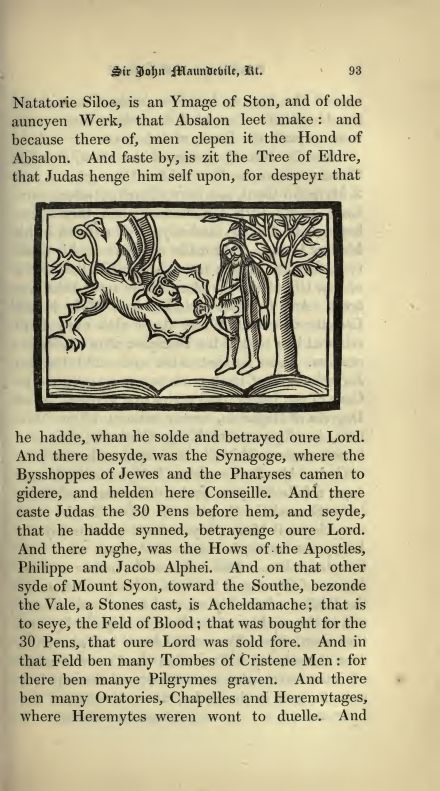 |
| Sir John Mandeville – Travels |
n
n
n
nSir John Mandeville, writing in the fourteenth century, callsnthe place Acheldamache, and also mentions the charnel house and thatnthere were
n
n
n
n“… many Tombes of Cristene Men: for there ben manye Pilgrymesngraven.”n
n
n
nMandeville also includes a suitably grisly woodcut of the Devilndragging Judas’s soul out of his body as he hangs on the tree.
n
n
n
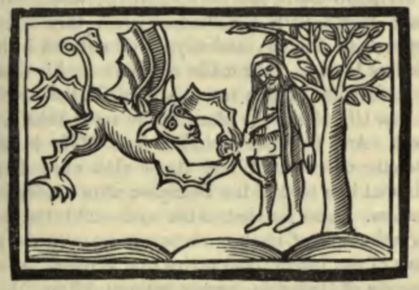 |
| Mandeville – Detail of above |
n
n
n
nOne legend hasnit that Judas had planned his suicide in advance, in order to be waiting innHell when Jesus arrived there for the Harrowing of Hell after he died and tonbeg for his forgiveness, but the Devil held his soul over the top of Limbonuntil after the Resurrection, whereupon he dropped it into the everlastingnflames. The tree on which Judas hanged himself had legends enough of its own.
n
n
n
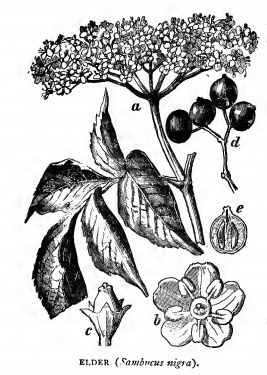 |
| Elder |
n
n
n
nIn the Vision of Piers Plowman is,
n
n
n
n“Judas, he japed With jewennsilver,n
nAnd sithen on an eller Hanged hymselve.”n
n
n
n
n
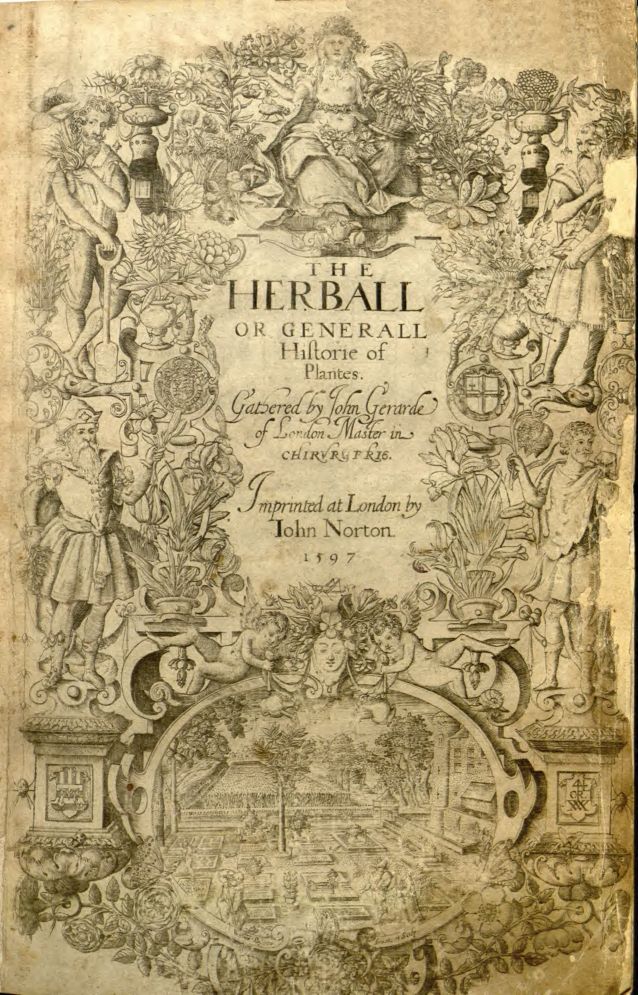 |
| John Gerard – Herball – 1597 |
n
n
n
nThe ‘eller’ here isnthe elder tree, which is the usual tree mentioned in legend, although JohnnGerard, in his Herball (1597), says of Cercis siliquastrum
n
n
n
n“…itnmay be called in English, Iudas tree, for that it is thought to be that whereonnIudas hanged himfelfe, and not upon the elder tree, as it is vulgarly faid.”n
n
n
n
n
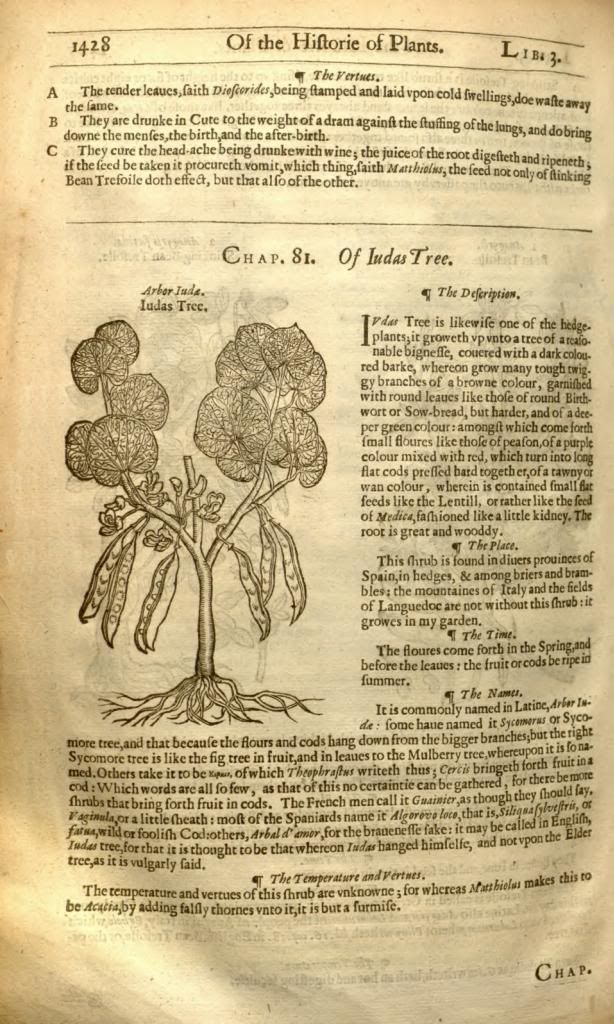 |
| Gerard – Herball – Judas Tree – 1597 |
n
n
n
nWell, considering the flapdoodle concerning William Shakespeare I’ve beennwriting about last month and this, can we consider him to be vulgar too? Becausenin Love’s Labour’s Lost, Bidon says the line,
n
n
n
n“Judas was hanged on annelder. [Act V, Sc.ii]”n
n
n
nMandeville claims to have seen the very tree in anvalley between Jerusalem and Jehosaphat,
n
n
n
n“And faste by is zit, the tree ofnElder that Judas henge himself upon, for despeyr that he hadde when he soldenand betrayed oure Lord.”n
n
n
nOther trees that have been put forward as thenpossible sort employed by Judas include the willow, the carob, the aspen andnthe fig (indeed, some say the very same fig tree cursed by Jesus, somewhatnpetulantly, for not bearing fruit out of season. Messiah maybe, but a prettynpoor botanist [see Mark Ch.11]).
n
n
n
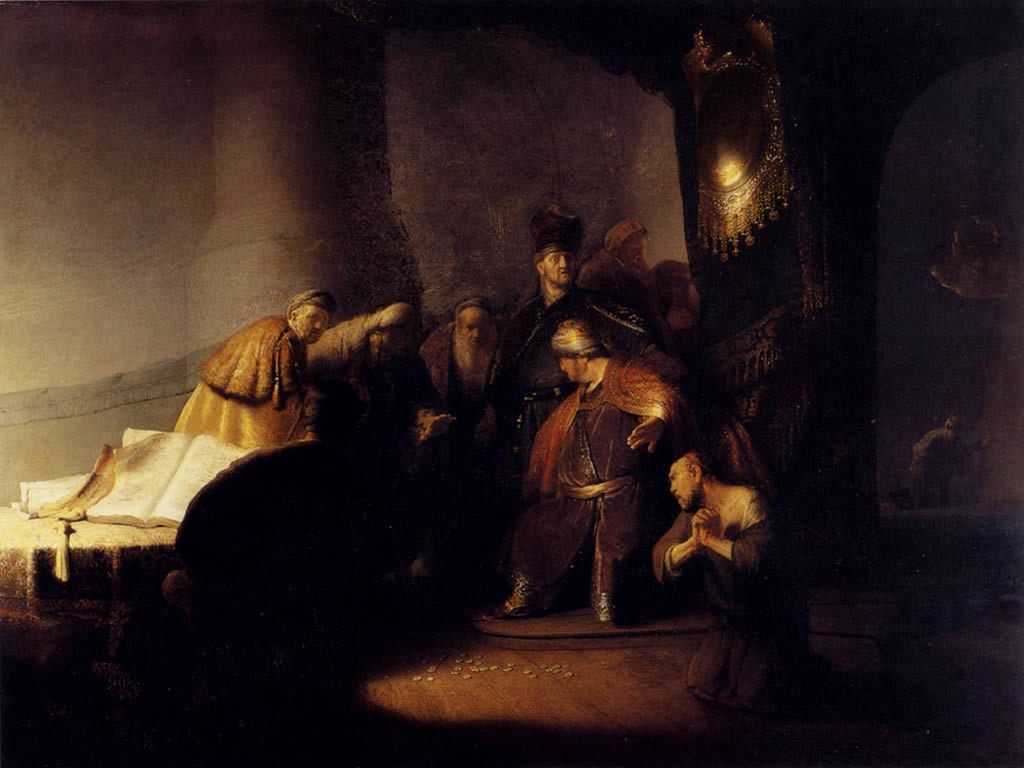 |
| Rembrandt – Judas returns the silver |
n
n
n
nOf the other myths, legends andntraditions surrounding Judas is that he was born either on the last Monday ofnthe year (we don’t what year that was, however) or on December 31st.nRobert Southey, one-time poet laureate, records in his Omniana (1812 Voln2) that the descendants of Judas still lived on the island of Corfu, althoughnthe islanders themselves have disputed this. He was also reckoned to have hadnred hair, which explains why some people aren’t fond of red-heads (this doesnnot include me).
n
n
n
nBack to Shakespeare, As You Like It on this occasion,nwhere we find the following exchange,
n
n
n
nRosalind. His very hair is of thendissembling colour.n
nCelia. Something browner than Judas’s.n
n
n
nAnotherntradition says that at the Last Supper, just as Jesus was announcing to thenapostles that he knew that one of them would betray him and just prior to Judasnrevealing it to be him by dipping his hand into the breadbasket at the samentime as Jesus, Judas knocked the salt cellar over with his sleeve. Spilling thensalt is bad luck, some saying that it stems from this act, some tracing it evennfurther back in time, and you will still find people who, should they spillnsome salt on the table, will throw a pinch over their left shoulder ‘intonthe devil’s face’.
n
n
n
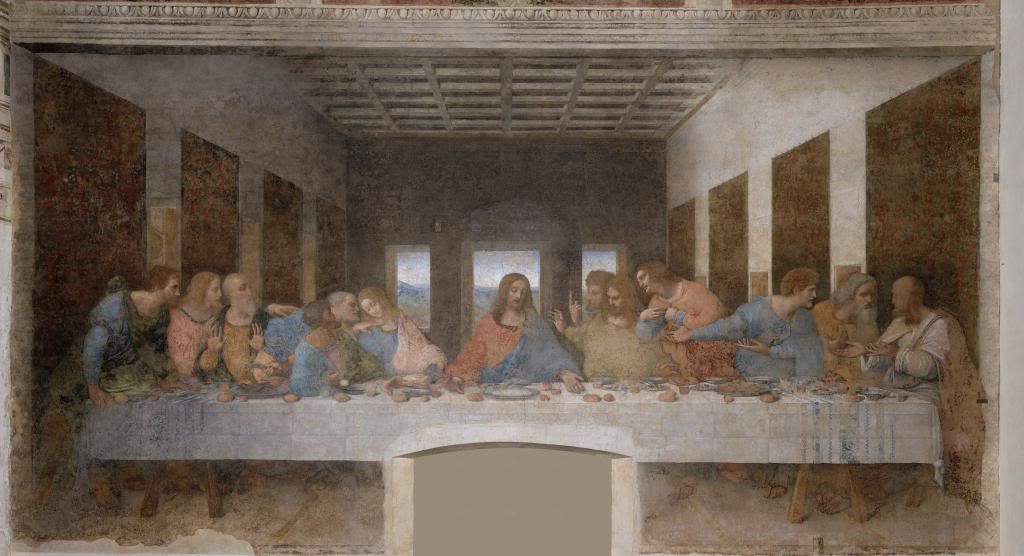 |
| Leonardo – The Last Supper |
n
n
n
nIn the ambitious, experimental and ultimatelynill-executed fresco by Leonardo da Vinci in the refectory of the convent ofnSanta Maria della Grazie, Milan, Judas knocks over the salt pot, as mentioned.nIt’s hard to see now because Leonardo, who should have known better, sealed thenplaster on the wall with a combination of mastic, pitch and gesso and paintednthe work in tempera onto the sealed surface.
n
n
n
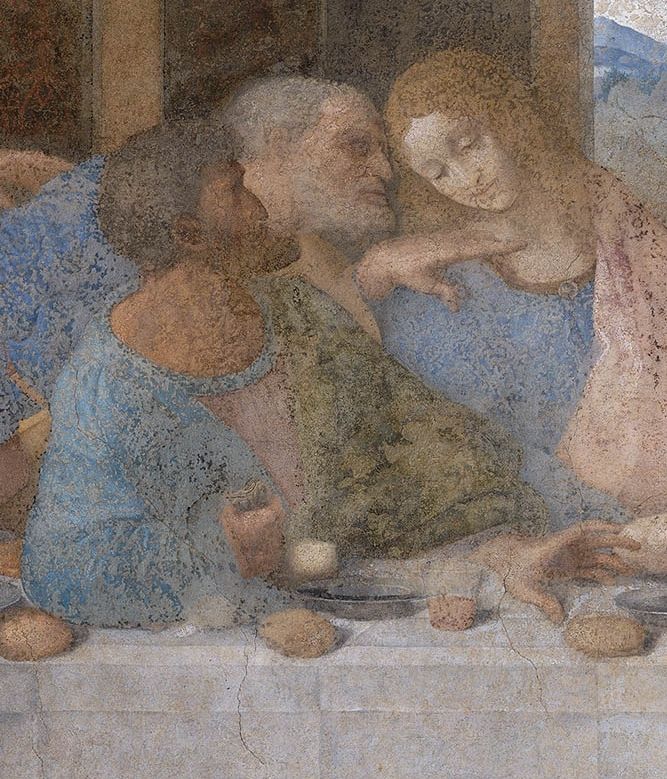 |
| Leonardo – The Last Supper – Judas spills the salt |
n
n
n
nIt’s a variation on secconfresco painting, and this sort of thing doesn’t usually turn out well. Truenfresco, buon fresco, is painted onto the plaster whilst it is stillndamp; the wet paint penetrates into the wet plaster and a series of chemicalnreactions take place as the plaster dries, locking the coloured pigment intonit. It makes a very long lasting, virtually permanent bond (barring atmosphericndamp and so forth) but secco fresco is painted onto the surface ofnalready dry plaster and the resultant skin of paint is very susceptible tondamage and flaking. Leonardo’s strange recipe for the ground began tondisintegrate almost as soon as the work was completed and over the interveningnyears, the surface has degraded enormously (it doesn’t help that variousnrestoration attempts have also made it worse, and things like knocking andoorway into the wall (in 1652) and then bricking it up again haven’t helpedneither).
n
n
n
 |
| Raffaelli – The Last Supper – Judas spills the salt |
n
n
n
nA later mosaic copy by Giacomo Raffaelli, now in Vienna, shows thenincident in much greater detail.
n
n
